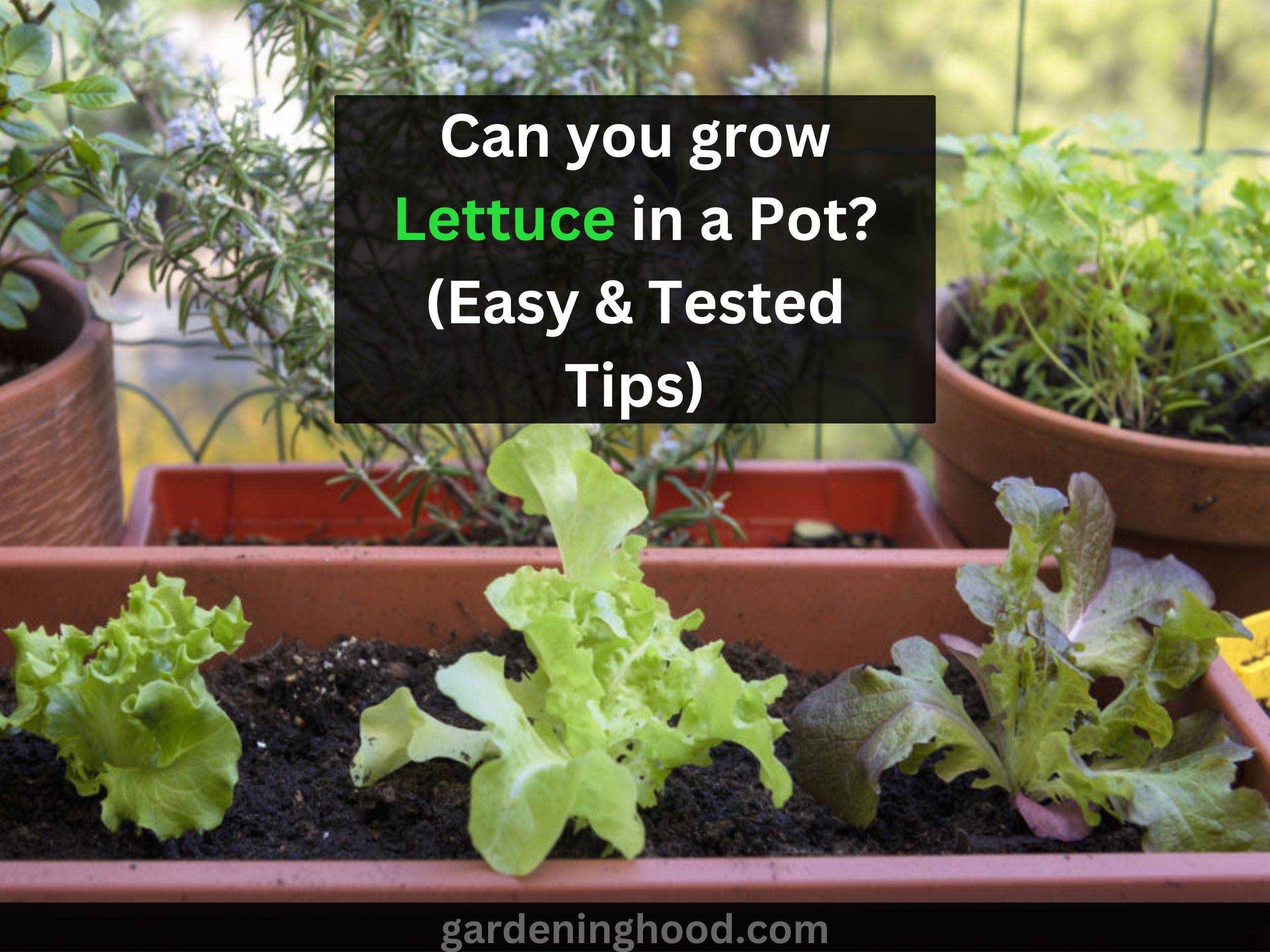Aphids on Lettuce – 8+ Tested ways to get rid of them and prevent them
Are you worried about Aphids on Lettuce plants? Aphids can affect any plant and they have soft bodies that can be of color green, brown, black, or even colorless. Aphids are small-sized insects, commonly known as greenflies and blackflies that attack many plants like mint, Hibiscus, Petunias, Tomato Plants, etc. They are seen in a variety of colors. These insect pests are considered to be the most destructive and common pests affecting fruit, vegetable, and herb garden. The lettuce plant can be grown in summer, cold weather, and partial shade.
Quick takeaways:
- The aphids suck the sap from the plant’s body and make them lifeless.
- They are widely spread and are distributed very easily to plants.
- They are seen to be getting transported by humans as well via infected plant materials or the same.
- You can get rid of aphids on lettuce such as the use of soap spray, companion plants, pruning off the lettuce, not water much, avoiding overfertilizing, and many more explained below.
- The pests multiply frequently and need to be identified as soon as possible so that your plant stays safe from the controlled measures you took.
So let’s know some tested ways to get rid of Aphids on Lettuce plants and prevent them.
Aphids identification
Aphids can affect any plant and they have soft bodies that can be of color green, brown, black, or even colorless. The legs are thin and long. Most aphids you see will not have wings, so they cannot jump or fly in most cases. The mouth has a pointed protrusion that sucks the sap from the plant tissue.
- The aphids multiply rapidly and are present in groups.
- They release a powdery substance called honeydew or a sooty-like substance that also indicates that the aphids have attacked the plant.
- Many plants that are looking overcrowded might have been attacked by the aphids
- Plants that are overwatered or underwatered are also under the threat of aphids.
- The lower surface of leaves is usually the area of infestation and aphids are seen here in clusters
What does aphid damage look like?
The leaves are pierced by the aphids and they suck all the energy i.e.: sap from the plant body. The plant will start to show stunted growth, aphids will attack the lettuce in the fall season.
- Leaves start to look lifeless and distorted. Curling of leaves occurs.
- The stem look coated with bugs and roots in some cases is also affected.
- The strictly sooty appearance on the stems and leaves.
How to get rid of aphids and prevent them? – Aphids on Lettuce
1. Water jets
The high-speed water jets can be used when lettuce leaves are highly attacked by many aphids. The aphids can be easily recovered by spraying speedy water with the hose on the leaves. The leaves need to be sprayed under the surface as well because aphids are hidden there.
Make sure that you don’t damage the other plants near the lettuce plants and also parts of the lettuce plants. You need to try this method until the aphids completely vanish.
2. Lettuce aphids organic control
Lettuce aphids can be controlled by using organic ways like using essential oils. Essential oil and concentrated oil extracted from plants, especially herbs and have a strong aroma.
The essential oils of clove, garlic, thyme, and rosemary and dilute with some amount of water. Then simply say that onto the leaves and plant parts to keep the aphids away. The aphids don’t like the pungent smell that much.
3. Soap spray
The insecticidal soap is another way to get rid of flies and aphids’ culprits. The soaps like dish soaps are also considered to help eliminate aphids.
The soap solutions can be sprayed on the leaves to make the aphids run far away from the lettuce plants.
4. Companion plants
Planting useful plants to eat the lettuce plants can help you control the aphids. Do companion planting! The plants like cilantro, chives, onions, carrots, etc can be planted near the lettuce plants.
Also avoid planting those plants that can attract aphids near and your lettuce plants also suffer like Brussels sprouts, corn, potatoes, etc. Companion plants are seen to be highly effective if you make the right choice. You will start to see the change that the aphids will stay away from the lettuce leaves.
5. Predators (natural enemies)
Now the natural enemies of aphids include the predators like ladybugs, wasps, hummingbirds, lacewings, and some birds that munch on these pests. Many plants, especially flowering plants, are attractants of many pollinators and bugs that will eat these aphids.
You can plant marigolds, nasturtium, etc. that will bring useful predators near the lettuce plants and aphids will fear for their life and won’t come near. You should plant the lettuce varieties that attract the ladybugs and lacewings that eat the aphids.
6. Cutting back the lettuce
The lettuce leaves are coated badly with the aphids, then choose to prune off the lettuce or cut back teletype plants to the soil.
As the aphids have created a mess on the leaves with the infestation and leaves are not going to come to the normal stage. So cut the leaves of lettuce and start from the beginning.
7. Avoid overwatering
The overwatered plant is stressed, if the lettuce is overwatered, then they are prone to get affected by aphids. Don’t overwater the lettuce plants. The soil should be checked first if it is dry or still moist.
The moist soil if watered will become soggy and the eaves will drop becoming more suitable for the aphids to attack. Aphids attack the soft leaves and the young ones too—water lettuce one to two times a week about one inch deep.
8. Avoid overfertilizing
The overfertilized lettuce plants are again stressed. aphids attack the stressed plants facing some kind of environment or other stress. The fertilizing of soil enhances the production and new growth in the plant, the plant gets less hardy, and new leaves appear.
Over-fertilizing will enhance this process. The aphids will quickly attack the young tender parts of the plants. You don’t want them to fertilize much only during the early growth times but not later. Keep it to a minimum afterward.
9. Remove the weeds
Don’t let the weeds grow near the plants, as the weeds can be the entry spot of the aphids. Weeds invite the aphids and easy targets of aphids.
They reach the weeds and then to the lettuce plants. So, make sure you have cut off or removed the weeds from the garden.
Wrapping up the context
We hope you like our effort to help out with the aphid problems and infestation. Take a look at the proven steps above and use them. You need to be consistent with them to remove the aphids completely as there are chances that they will reappear if not removed properly.
Enjoy your lettuce plants and Happy planting!
FAQs
1. How do you prevent aphid infestation?
Don’t overcrowd the plant too much, use onion plants near the lettuce, destroy the ants near the lettuce plants, and look underneath the leaves’ surface.
2. What kills aphids instantly?
The insecticidal soaps and the oils are useful in getting rid of aphids without giving any harm to the nearby plants.
3. What is a natural spray for aphids?
The dish soap is blended with a cup of water to make a soap solution that can be used to remove the aphids and is a natural way to kill aphids.
4. Why do aphids keep coming back?
The aphids once appear then there are chances that you’ll see them back on and on. The aphids multiply quickly and they will form such big bunches in the blink of an eye. They reproduce at a fast pace and removing them is a tough task. If they appear back that means they have not completely vanished.


